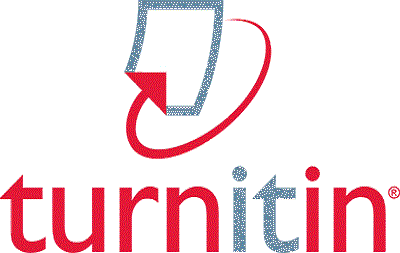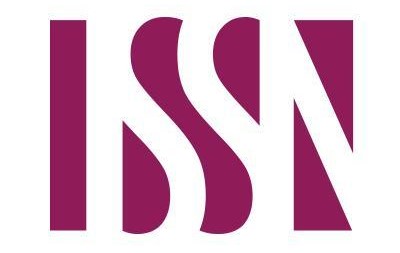The impact of a functional training program based on anaerobic energy systems on several functional variables and body components for people who value overall health, both with and without intermittent fasting
Main Article Content
Abstract
The research aims to prepare a functional training program based on the anaerobic energy system. The researchers used the experimental method for two experimental groups with pre- and post-measurements. The research sample consisted of (24). The statistical package (SPSS 19) was used. The researchers reached the most important results: The latest training method using functional training according to the two anaerobic energy systems with intermittent fasting showed a clear improvement in all functional variables (respiratory endurance and resting pulse) and body components (muscles, fats, fat percentage and weight). The researchers also recommended relying on functional exercises prepared according to the two anaerobic energy systems as basic data when training participants in gyms.
Article Details

This work is licensed under a Creative Commons Attribution-NonCommercial 4.0 International License.
References
Abdel Rahman, N. A. (2000). Aerobic activities. Al-Ma’arif facility.
Al-Baqal, Y. M. T. A. (2022). Sports Training Science for Colleges and Departments of Physical Education and Sports Sciences (ISBN: 9789922983578). Al-Kashkul House for Printing and Publishing.
Al-Janabi, A. M. A. J. (2018). Basics of Measurement and Testing in Physical Education. Kitab Publishing Center. noor-book.com/sue4om
Al-Saeed, R., & Pain, M. T. G. (2017). Descriptive analysis of hip and knee joint loading during reverse roundhouse kick (hook) karate kick performed in training and competition modes. ISBS Proceedings Archive, 35(1), 9.
Al-Yasiri, M. J. (2010). Theoretical foundations of physical education tests. Dar Al-Diyaa for Printing and Publishing. Al-Najaf Al-Ashraf, 72.
Antoni, R., Johnston, K. L., Collins, A. L., & Robertson, M. D. (2017). Effects of intermittent fasting on glucose and lipid metabolism. Proceedings of the Nutrition Society, 76(3), 361–368. https://doi.org/10.1017/S0029665116002986
Bompa, T. O., & Buzzichelli, C. (2019). Periodization-: theory and methodology of training. Human kinetics.
Brisebois, M. F., Rigby, B. R., & Nichols, D. L. (2018). Physiological and Fitness Adaptations after Eight Weeks of High-Intensity Functional Training in Physically Inactive Adults. Sports, 6(4), 146. https://doi.org/10.3390/sports6040146
DAVID H. FUKUDA. (2019). Assessments for Sport and Athletic Performance Features 50 comprehensive tests for athletes and clients . Human Kinetics . https://lccn.loc.gov/2018036040
DeBlauw, J. A., Drake, N. B., Kurtz, B. K., Crawford, D. A., Carper, M. J., Wakeman, A., & Heinrich, K. M. (2021). High-Intensity Functional Training Guided by Individualized Heart Rate Variability Results in Similar Health and Fitness Improvements as Predetermined Training with Less Effort. Journal of Functional Morphology and Kinesiology, 6(4), 102. https://doi.org/10.3390/jfmk6040102
Elgohary, S. (2022). Effect of Aerobic Exercises With Intermittent Fasting on Body Composition And Some Physiological Variables Among Obese Women Practicing Sports. The Scientific Journal of Physical Education and Sports Sciences, 42(1), 171–189. https://journals.ekb.eg/article_206222.html
Faiza, A. J., & Ghada, M. J. (2019). Scientific foundations for testing, measurement and evaluation. Al-Noor Office. https://uomustansiriyah.edu.iq/media/lectures/13/13_2021_10_26!08_09_36_PM.docx
Feito, Y., Heinrich, K., Butcher, S., & Poston, W. (2018). High-Intensity Functional Training (HIFT): Definition and Research Implications for Improved Fitness. Sports, 6(3), 76. https://doi.org/10.3390/sports6030076
Hammad, S. H., Mikhlif, A. K., & Abdel, M. A. Q. (2022). The effect of competitive exercises with the stations system in developing some aspects of attention and the accuracy of performing the skill of stabbing among female students of fencing weapons. Sport Culture, 13(2).
Hussein, D. R., & Khaled, A. A. (2024). The effect of a functional training curriculum according anaerobic energy systems with and without intermittent fasting on a number of physical variables for those who like general health. Journal of Studies and Researches of Sport Education, 34(4), 774–791. https://doi.org/10.55998/jsrse.v34i4.785
Mimi, D. (2016). Intermittent Fasting for Weight-Loss and Wellness Scheduled Eating as a Healthy، Sustainable and Free Solution. Health & Medicine. https://www.slideshare.net/slideshow/intermittent-fasting-for-weight-loss-and-wellness-food-can-wait/57940791
Mustafa, Y. A. M. (2020). The effect of functional training on some physiological variables associated with the kumite competition in karate. Scientific Journal of Research and Studies in Physical Education, 39(5), 359–380. https://doi.org/10.21608/jsps.2020.92574
Posnakidis, G., Aphamis, G., Giannaki, C. D., Mougios, V., Aristotelous, P., Samoutis, G., & Bogdanis, G. C. (2022). High-Intensity Functional Training Improves Cardiorespiratory Fitness and Neuromuscular Performance Without Inflammation or Muscle Damage. Journal of Strength and Conditioning Research, 36(3), 615–623. https://doi.org/10.1519/JSC.0000000000003516
Santana, J. C. (2016). Funtional Training: Exercices and programming for training and performance. Estados Unidos: Human Kinetics.
Santana, J. C. (2019). JC’s Total Body Transformation: The Very Best Workouts for Strength, Fitness, and Function. Human Kinetics Publishers.
Thurgood, G., & Paternoster, M. (2013). Core Strength Training: The Complete Step-by-step Guide to a Stronger Body and Better Posture for Men and Women. Dorling Kindersley Ltd.
Tumminello, N. (2016). Building muscle and performance: a program for size, strength & speed. Human Kinetics.





 IASJ
IASJ CC-BY-4.0
CC-BY-4.0 turnitin
turnitin ISSN
ISSN DOAJ
DOAJ Crossref
Crossref GoogleScholar
GoogleScholar Orcid
Orcid